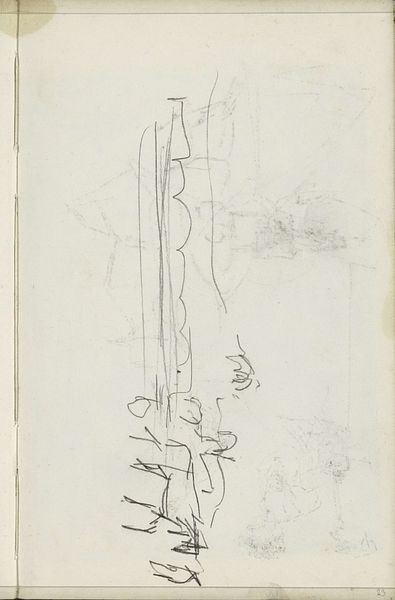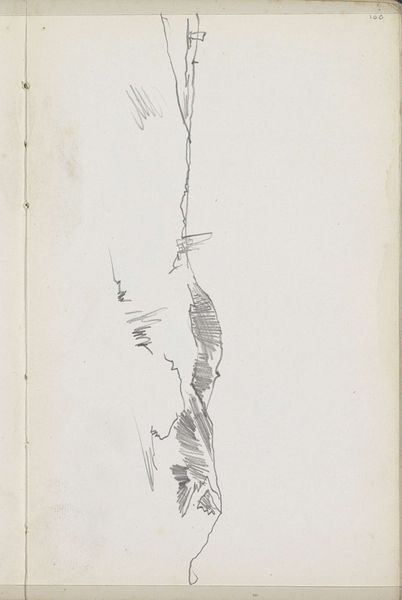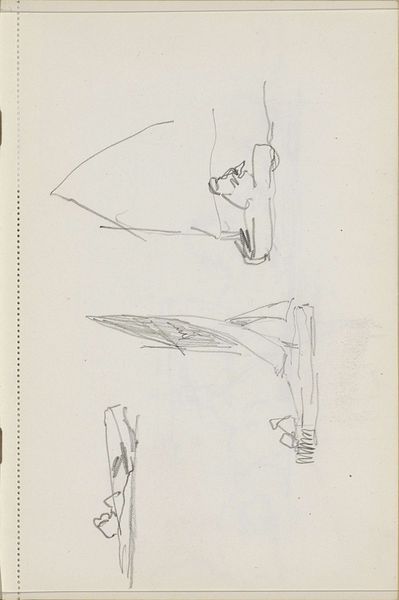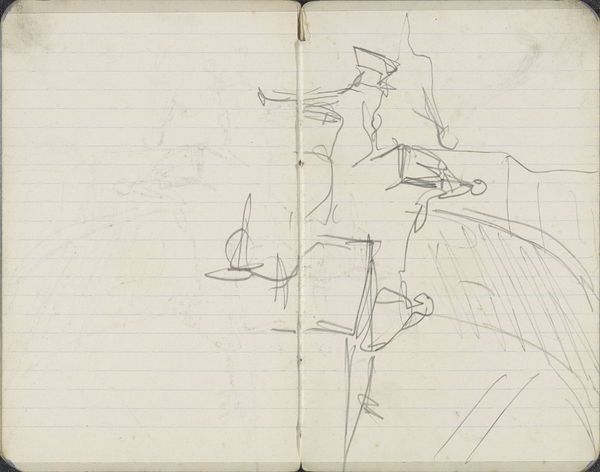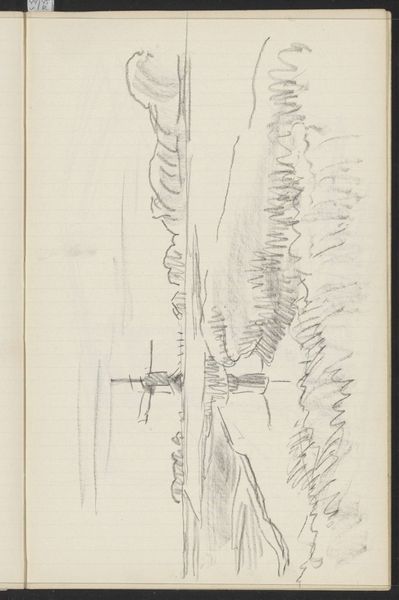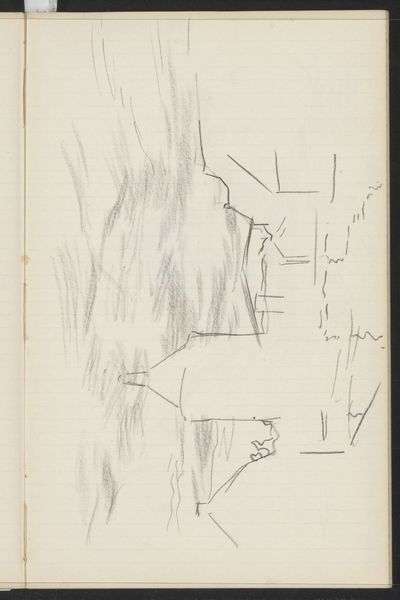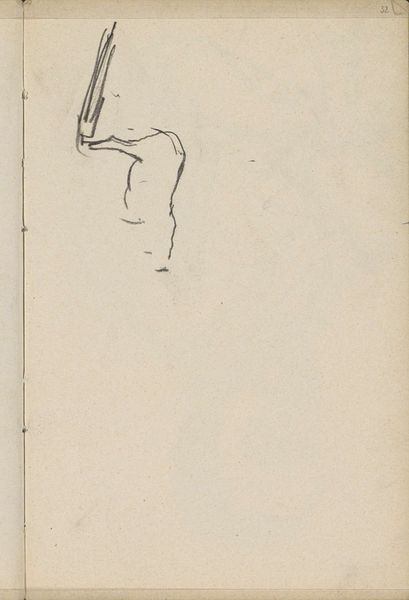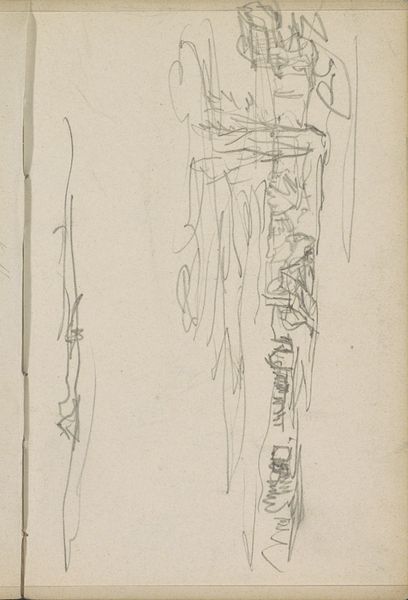
drawing, pencil, graphite
#
drawing
#
landscape
#
pencil
#
graphite
#
realism
Copyright: Rijks Museum: Open Domain
Editor: So this pencil and graphite drawing, "Zeilschip op open water," by Willem Bastiaan Tholen, made sometime between 1900 and 1931, is really striking. It has a melancholic feel to it, perhaps because of the unfinished quality and the solitude of the sailboat. What do you see in this piece? Curator: I see a vessel adrift, a potent symbol across cultures for journeys both literal and metaphorical. The lone sailboat calls to mind, for me, humanity's ongoing dance with nature. Editor: Interesting! It feels very stark and immediate. I like the rough strokes. Curator: Indeed. The unfinished quality could represent the endless, incomplete nature of human endeavor. Consider how often the sea itself is a symbol – of the unconscious, the boundless possibilities that await. Editor: It seems so exposed out on the water. Were sailboats a popular subject at the time? Curator: Very much so. They were often depicted as symbols of national pride, maritime prowess. But here, the rendering feels different – more intimate, perhaps more questioning. Look at the almost hesitant lines of the drawing. What does that suggest to you? Editor: Maybe vulnerability, a questioning of that strong national pride? It does seem at odds with more triumphant maritime imagery. Curator: Exactly! The beauty of a symbol lies in its ambiguity, its capacity to evoke multiple interpretations over time. Editor: That's a good point. Thinking about the sea as both freedom and isolation…it really makes you wonder what the artist was trying to say. Curator: Symbols really evolve, carrying different meanings across eras and cultures. Thinking about how Tholen captures the solitary boat transforms how I think about our own era. Editor: I never considered how the style contributes to the symbolic meaning. Thanks for sharing your thoughts!
Comments
No comments
Be the first to comment and join the conversation on the ultimate creative platform.


